A dirty brown haze sometimes more than 1km thick is darkening skies not only over vast areas of Asia, but also in the Middle East, southern Africa and the Amazon Basin, changing weather patterns and threatening health and food supplies, the UN reported.
The huge smog-like plumes, caused mainly by the burning of fossil fuels and firewood, are known as “atmospheric brown clouds.”
When mixed with emissions of carbon dioxide and other gases blamed for warming the earth’s atmosphere like a greenhouse, they are the newest threat to the global environment, a report commissioned by the UN Environment Program and released on Thursday said.
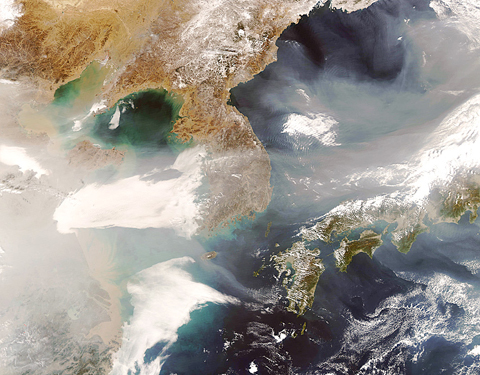
PHOTO: AP
“All of this points to an even greater and urgent need to look at emissions across the planet,” said Achim Steiner, head of Kenya-based UNEP, which funded the report with backing from Italy, Sweden and the US.
Brown clouds are caused by an unhealthy mix of particles, ozone and other chemicals that come from cars, coal-fired power plants, burning fields and wood-burning stoves. First identified by the report’s lead researcher in 1990, the clouds were depicted on Thursday as being more widespread and causing more environmental damage than previously known.
Perhaps most widely recognized as the haze this past summer over Beijing’s Olympics, the clouds have been found to be more than 1km thick around glaciers in the Himalayas and the Hindu Kush mountain range. They hide the sun and absorb radiation, leading to new worries not only about global climate change but also about extreme weather conditions.
“All these have led to negative effects on water resources and crop yields,” the report said.
Health problems associated with particulate pollution, such as cardiovascular and respiratory diseases, are linked to nearly 350,000 premature deaths in China and India every year, said Henning Rohde, a University of Stockholm scientist who worked on the study.
Soot levels in the air were reported to have risen alarmingly in 13 cities: Bangkok, Beijing, Cairo, Dhaka, Karachi, Kolkata, Lagos, Mumbai, New Delhi, Seoul, Shanghai, Shenzhen and Tehran.
Brown clouds were also cited as dimming the light by as much as 25 percent in some places, including Karachi, New Delhi, Shanghai and Beijing.
The phenomenon complicates the climate change scenario because the brown clouds also help cool the earth’s surface and mask the impact of global warming by an average of 40 percent, the report said.
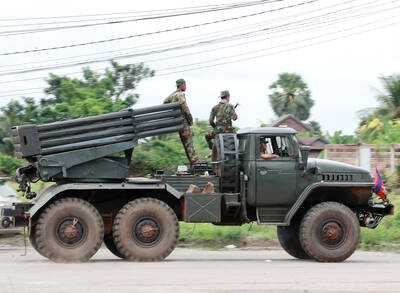
POLITICAL PATRIARCHS: Recent clashes between Thailand and Cambodia are driven by an escalating feud between rival political families, analysts say The dispute over Thailand and Cambodia’s contested border, which dates back more than a century to disagreements over colonial-era maps, has broken into conflict before. However, the most recent clashes, which erupted on Thursday, have been fueled by another factor: a bitter feud between two powerful political patriarchs. Cambodian Senate President and former prime minister Hun Sen, 72, and former Thai prime minister Thaksin Shinawatra, 76, were once such close friends that they reportedly called one another brothers. Hun Sen has, over the years, supported Thaksin’s family during their long-running power struggle with Thailand’s military. Thaksin and his sister Yingluck stayed
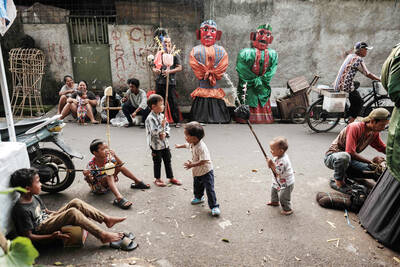
In the sweltering streets of Jakarta, buskers carry towering, hollow puppets and pass around a bucket for donations. Now, they fear becoming outlaws. City authorities said they would crack down on use of the sacred ondel-ondel puppets, which can stand as tall as a truck, and they are drafting legislation to remove what they view as a street nuisance. Performances featuring the puppets — originally used by Jakarta’s Betawi people to ward off evil spirits — would be allowed only at set events. The ban could leave many ondel-ondel buskers in Jakarta jobless. “I am confused and anxious. I fear getting raided or even
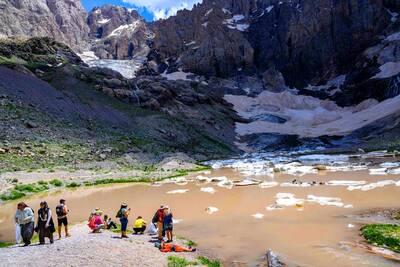
Kemal Ozdemir looked up at the bare peaks of Mount Cilo in Turkey’s Kurdish majority southeast. “There were glaciers 10 years ago,” he recalled under a cloudless sky. A mountain guide for 15 years, Ozdemir then turned toward the torrent carrying dozens of blocks of ice below a slope covered with grass and rocks — a sign of glacier loss being exacerbated by global warming. “You can see that there are quite a few pieces of glacier in the water right now ... the reason why the waterfalls flow lushly actually shows us how fast the ice is melting,” he said.
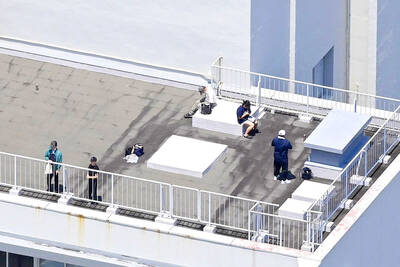
Residents across Japan’s Pacific coast yesterday rushed to higher ground as tsunami warnings following a massive earthquake off Russia’s far east resurfaced painful memories and lessons from the devastating 2011 earthquake and nuclear disaster. Television banners flashed “TSUNAMI! EVACUATE!” and similar warnings as most broadcasters cut regular programming to issue warnings and evacuation orders, as tsunami waves approached Japan’s shores. “Do not be glued to the screen. Evacuate now,” a news presenter at public broadcaster NHK shouted. The warnings resurfaced memories of the March 11, 2011, earthquake, when more than 15,000 people died after a magnitude 9 tremor triggered a massive tsunami that